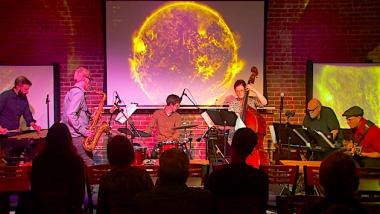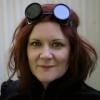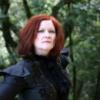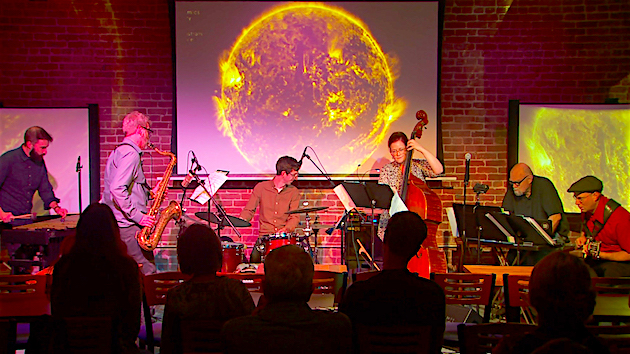
Alternating footage of blood cells and celestial bodies, single-cell organisms, and constellations, a 20-minute video loop projected onto a wall at stage right accompanied Saturday night’s sold-out performance by the Lisa Mezzacappa Six at SFJAZZ’s Joe Henderson Lab. The Berkeley bassist, composer, and bandleader has a long and impressive track record presenting multifarious multimedia productions, but her current project inspired by the short stories of the Italian writer Italo Calvino is a particularly felicitous meeting of music and literature.
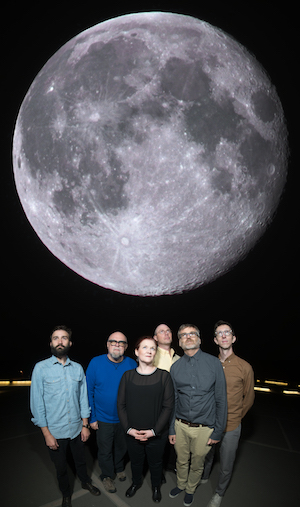
Mezzacappa introduced each piece by linking it to one of Calvino’s short stories from the Cosmicomics collection, droll fables about the origins of the universe and the relationships between various heavenly bodies. Her music stands up easily by itself, and the concert would have worked fine without direct reference to Cosmicomics or with Calvino’s text provided via program notes. Instead Mezzacappa read several short excerpts from the tales, and her recitation amplified the whimsy and playfully expansive nature of her music.
Her band features longtime compatriots John Finkbeiner on electric guitar, Jordan Glenn on drums, Tim Perkis on electronics, tenor saxophonist Aaron Bennett, and more recent addition Mark Clifford on vibraphone. Opening with The Soft Moon, a piece about the contentious relationship between the Earth and Moon, the ensemble staked out nebulous territory between the programmatic and conversational with Bennett and Finkbeiner seeming to take the roles of the converging spheres.
Mezzacappa’s sonic palette is inclusive and catholic, encompassing silence and noise, acoustic and electric sounds, through-composed and freely improvised passages. In much the same way that Calvino turns cosmic bodies into characters in conflict, imbuing the infinite or incomprehensibly large with idiosyncratically human qualities, her music toggles between inner and outer space, mirco and macro, aquatic and terrestrial.
One of the pleasures of the ensemble is the difficulty in identifying which musician is creating what sounds. On Solar Storm, the sad tale of a misunderstood solar flare chased out of the town, Perkis employed an intriguing array of blips, buzzes and scratchy textures as the piece gradually gained density and momentum. In Glenn, a master at creating three dimensional rhythmic matrixes, Mezzacappa has an ideal drummer for her restless and searching music.
In recent years, Mezzacappa has found musical inspiration in film noir and neo-noir novels and women explorers from the 19th and early 20th centuries. She leads or co-leads at least a half-dozen different ensembles with distinct practices or repertoires (with another four or five on the back burner). The insistent wit and wisdom of Calvino’s Cosmicomics take Mezzacappa and her sonic cosmonauts into realms too rarely traveled. I’m ready for another trip.

